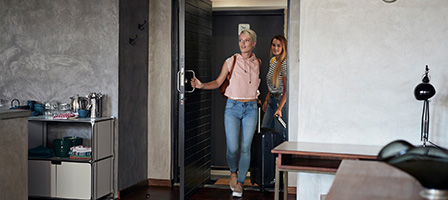Tax Treatment of a Room Rental
 Article Highlights:
Article Highlights: - Vacation Home Rental Rules
- Order of Deductions
- Loss Limitations
- Expense Prorating
If a taxpayer rents rooms or other space in a home and the rented portion does not have facilities (a bathroom and a kitchen) that would make it a dwelling unit on its own, the taxpayer and the renter may be considered to be occupying one dwelling unit. Thus, the “landlord” is mixing personal expenses with business expenses, a situation in which the tax code does not permit a loss.
As a result, the income and expenses are treated under the same rules as vacation home rentals and are reported on Schedule E, with prorated expenses deductible against the rental income in a specific order and no loss being allowed.
The deductions are claimed in the following order:
- First, mortgage interest and taxes.
- Next, operating expenses (examples: advertising, repairs, utilities, maintenance, insurance).
- Finally, depreciation.
But some unusable expenses may be carried over to the next year, where again they and the next year’s expenses will be limited to the next year’s rental income.

Because the expenses are taken in a specific order, home mortgage interest and property taxes paid for the home (which, for many taxpayers, would be deductible anyway) are first deducted from the rental income. Next come the operating expenses, of which only $1,300 of $1,417 is deductible in this example because that amount reduces the rental income to zero. Thus, $117 of the operating expenses and the depreciation are not deductible.
Any reasonable method for dividing the expenses may be used. The two most common methods for allocating expenses, such as mortgage interest and heat for the entire house, are based on the number of rooms in and square footage of the home.

If you have questions related to renting a room or a vacation home, or about short-term rentals of your home, please give this office a call.
|
|  |





